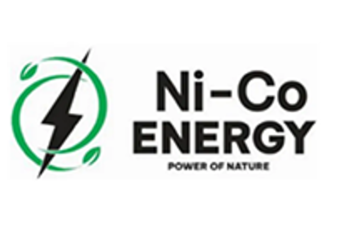Unlock Your VVC Potential: Tap into Vital Resources Now!
As more organizations are actively looking for ways to reduce their carbon footprint and work toward a greener, more sustainable world, stakeholders are turning to VVC (Virtual and Variable Capacity) resources as part of their long-term strategies. The idea is to create environments where businesses can operate without negatively impacting the environment while getting the most out of their current and future resources.
VVC is an umbrella term that encompasses various innovative solutions that reduce energy requirements and costs while still meeting the needs of businesses and consumers. These include, but are not limited to, renewable resources such as wind, solar, geothermal, and hydropower; energy efficiency technologies such as smart thermostats and LED lighting; green building techniques for both residential and commercial applications; and digital technologies such as cloud computing and big data analytics.
VVC resources can optimize energy use and reduce costs by optimizing energy production and storage. By utilizing these resources, businesses can more effectively manage energy usage and respond to changes in the environment by altering their capacity in line with changing demand and weather patterns. Additionally, VVC can allow businesses to adopt energy-saving practices such as energy chains and power balancing strategies, which reduce energy consumption by optimizing when and how energy is used.
To make the most of VVC resources, businesses must be equipped with the right infrastructure and tools to properly measure and track their energy usage. This allows them to make informed decisions about when and how to use specific resources, as well as alter their capacity as needed. Furthermore, the development of green building standards and codes provide organizations with a convenient way to ensure resource efficiency.
By making the switch to VVC resources, businesses can not only reduce their environmental impact, but also increase their profitability. By cutting back on energy consumption and costs, companies can increase the amount of money they are able to put back into research and development, making new and innovative products that benefit consumers and the environment.
Ultimately, the advantages of VVC resources are immense. As more organizations take the plunge into the resource-optimizing world of VVC, the environment and economy will both benefit. As the technology continues to evolve and become more accessible, businesses and stakeholders can rest assured that they are taking one step closer to a more sustainable future.
As more organizations are actively looking for ways to reduce their carbon footprint and work toward a greener, more sustainable world, stakeholders are turning to VVC (Virtual and Variable Capacity) resources as part of their long-term strategies. The idea is to create environments where businesses can operate without negatively impacting the environment while getting the most out of their current and future resources.
VVC is an umbrella term that encompasses various innovative solutions that reduce energy requirements and costs while still meeting the needs of businesses and consumers. These include, but are not limited to, renewable resources such as wind, solar, geothermal, and hydropower; energy efficiency technologies such as smart thermostats and LED lighting; green building techniques for both residential and commercial applications; and digital technologies such as cloud computing and big data analytics.
VVC resources can optimize energy use and reduce costs by optimizing energy production and storage. By utilizing these resources, businesses can more effectively manage energy usage and respond to changes in the environment by altering their capacity in line with changing demand and weather patterns. Additionally, VVC can allow businesses to adopt energy-saving practices such as energy chains and power balancing strategies, which reduce energy consumption by optimizing when and how energy is used.
To make the most of VVC resources, businesses must be equipped with the right infrastructure and tools to properly measure and track their energy usage. This allows them to make informed decisions about when and how to use specific resources, as well as alter their capacity as needed. Furthermore, the development of green building standards and codes provide organizations with a convenient way to ensure resource efficiency.
By making the switch to VVC resources, businesses can not only reduce their environmental impact, but also increase their profitability. By cutting back on energy consumption and costs, companies can increase the amount of money they are able to put back into research and development, making new and innovative products that benefit consumers and the environment.
Ultimately, the advantages of VVC resources are immense. As more organizations take the plunge into the resource-optimizing world of VVC, the environment and economy will both benefit. As the technology continues to evolve and become more accessible, businesses and stakeholders can rest assured that they are taking one step closer to a more sustainable future.










